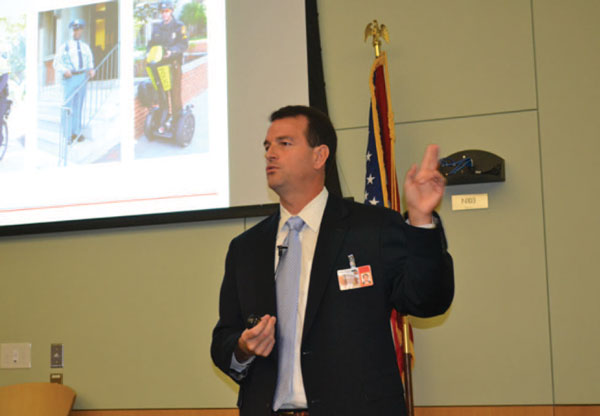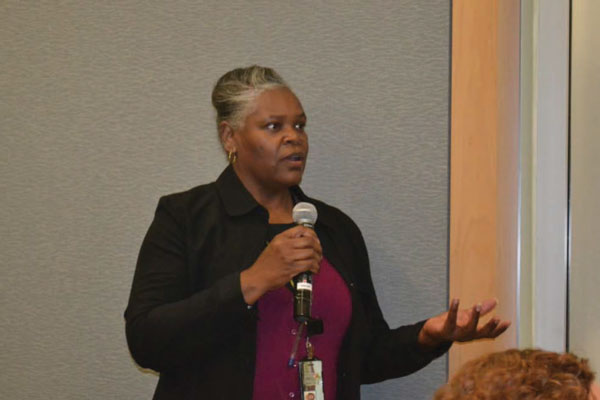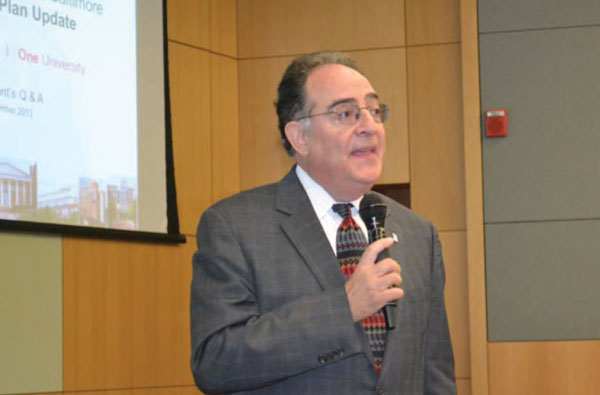About UMB History, highlights, administration, news, fast facts
- Accountability and Compliance
- Administration and Finance
- Center for Information Technology Services
- Communications and Public Affairs
- Community Engagement
- Equity, Diversity, and Inclusion
- External Relations
- Government Affairs
- Philanthropy
- Office of the President
- Office of the Provost
- Research and Development
- University Counsel
- Office of the President
- Administrative Officers
- Deans
- Boards of Visitors
- Faculty Senate
- Staff Senate
- University Counsel



 Establishing the Center for Interprofessional Education under Jane M. Kirschling, PhD, RN, FAAN, is part of the theme to excel at interprofessional education, clinical care, and public service, Mr. Gilbert said. Two other components he pointed out are Dr. Perman’s weekly interprofessional education clinic and the Promise Heights initiative headed up by Bronwyn Mayden, MSW, and the School of Social Work.
Establishing the Center for Interprofessional Education under Jane M. Kirschling, PhD, RN, FAAN, is part of the theme to excel at interprofessional education, clinical care, and public service, Mr. Gilbert said. Two other components he pointed out are Dr. Perman’s weekly interprofessional education clinic and the Promise Heights initiative headed up by Bronwyn Mayden, MSW, and the School of Social Work. Q: I know we have talked about upgrading security at Lexington Market. I can remember in the early part of the summer there was a survey that touched on many topics including cleanliness and the variety of foods. I didn’t hear anything about that in your strategic plan presentation. Can you give me an update on the market?
Q: I know we have talked about upgrading security at Lexington Market. I can remember in the early part of the summer there was a survey that touched on many topics including cleanliness and the variety of foods. I didn’t hear anything about that in your strategic plan presentation. Can you give me an update on the market? The consulting firm will come in and study the market with the kind of data in mind to give the city a road map as to how we need to make Lexington Market the kind of environment that everyone wants to go to shop, to buy food, etc. The firm is going to be selected within the next several weeks. The report should be in place by spring. It’s probably going to say that the city needs to invest $25 million to $30 million and I think there’s a reasonable expectation that this would be funded by the city. As to your question in particular, we’ll try to find out whether there is some way to feed the data back to the respondents. Thank you for filling out the survey.
The consulting firm will come in and study the market with the kind of data in mind to give the city a road map as to how we need to make Lexington Market the kind of environment that everyone wants to go to shop, to buy food, etc. The firm is going to be selected within the next several weeks. The report should be in place by spring. It’s probably going to say that the city needs to invest $25 million to $30 million and I think there’s a reasonable expectation that this would be funded by the city. As to your question in particular, we’ll try to find out whether there is some way to feed the data back to the respondents. Thank you for filling out the survey.